The endosperm is that part of the seed embryo which provides nutrition to almost all the flowering plants. In seed bearing plants (Gymnosperms), endosperm is the main source of diet for the embryo. In seed bearing plants, endosperm has single set of unpaired chromosomes (haploid i.e. n) and forms and extension of the female gametophyte. In the other case, in flower bearing plants (angiosperms), it takes birth as a result of fusion of 2 polar cells and one of the male haploid cell. Since, all the 3 polar nuclei participating in the merger are haploid, the endosperm formed is triploid i.e. 3n (Lopes & Larkins, 1993).
According to Waniska and Rooney (2000), the endosperm is the biggest part, comprising about 83 – 88% of the grain of sorghum and it consists of mainly starch and organic compounds made up of amino acids. Endosperm consist of three layers: aleurone layer (the outermost layer of the endosperm), the peripheral boundary, and the hard corn like layer and flour like soft areas. The corny i.e. hard layer and the flour like soft layer make up the largest portion of the endosperm.
The endosperm is a temporary structure and is ingested during the growth of the baby seed. It is the nutrient cell in seeds. 2 male nuclei combine with 2 different female eggs during the process of reproduction in flowering plants and this is known as double fertilization. The one male cell merges with female gamete and gives birth to a diploid cell known as zygote, whereas the other male cell merges with 2 polar cells to give birth to a triploid cell known as endosperm in the egg sac. This endosperm offers diet and energy to the growing seed. In case the embryo in the seed is completely used by the baby seed, then the seeds are known as non-endospermous seed whereas if the endosperm is not entirely consumed, then the seeds are known as endospermous seeds e.g. coconut and coffee (Berger, Grini & Schnittger, 2006)
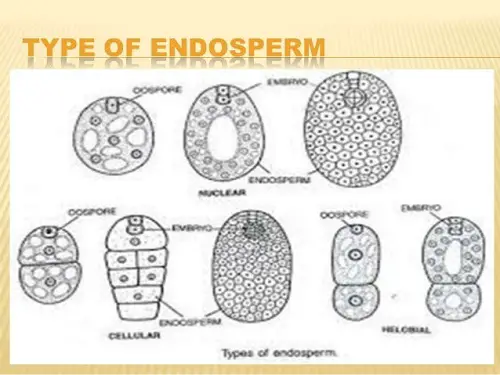
As per Schierbaum, (2008), endosperm comprises of 2 tissue cells, the outer most membrane that transforms into highly differentiated tissue, the aleurone tissue that has ∼7% of the grain weight and the endosperm with starch which is the biggest part of morphology in all cereals having ∼80% of the grain weight. According to Huh et al (2007), there are three types of endosperm structures
(a) Nuclear type,
(b) Cellular type and
(c) Helobial type.

Figure 1. Development of endosperm: A- Nuclear Type, B- Cellular Type and C- Helobial Type (Huh et al, 2007),
Nuclear Type
No wall formation. The nuclei is either free or in following phases, they may be differentiated by membranes. The endosperm undergoes many free nuclear divisions. This type of endosperm is found in maize, wheat, paddy, sunflower, etc.
Cellular Type
In cellular type endosperm, division takes place along with wall formation and thus the egg sac is divided into many compartments, many of which consist of more than 1 nucleus.
Helobial Type
This category of endosperm is located in the members of the order Helobiales. It is intermediate between the nuclear and the cellular categories. E.g. is Eremurus.

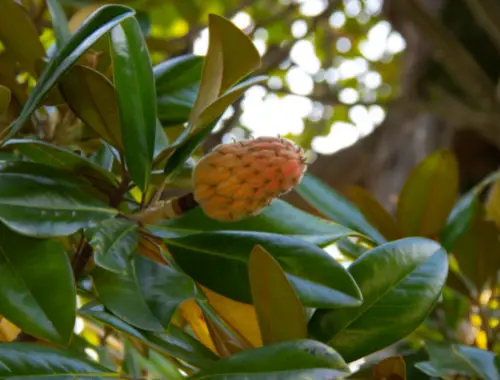
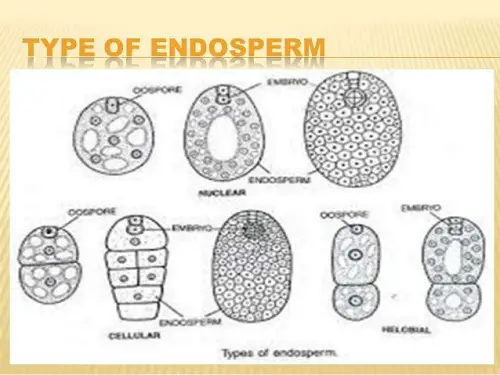
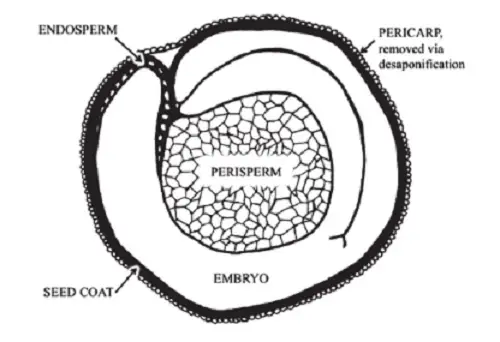
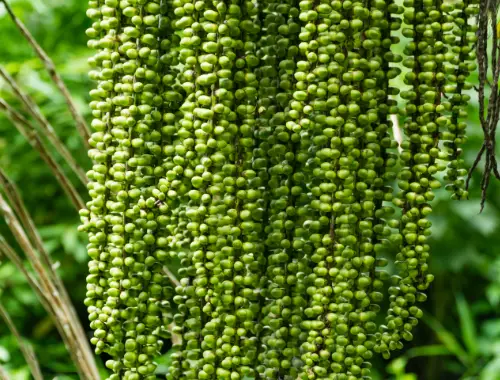
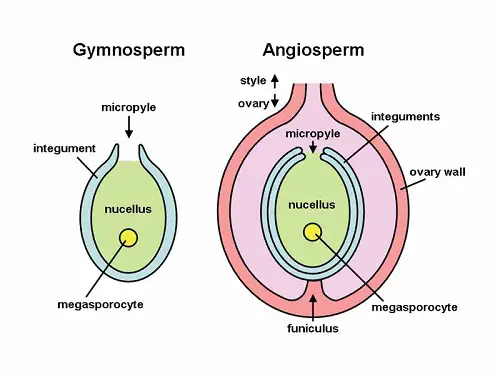
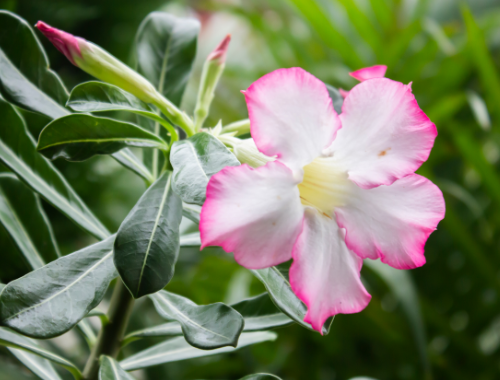





Leave a Reply